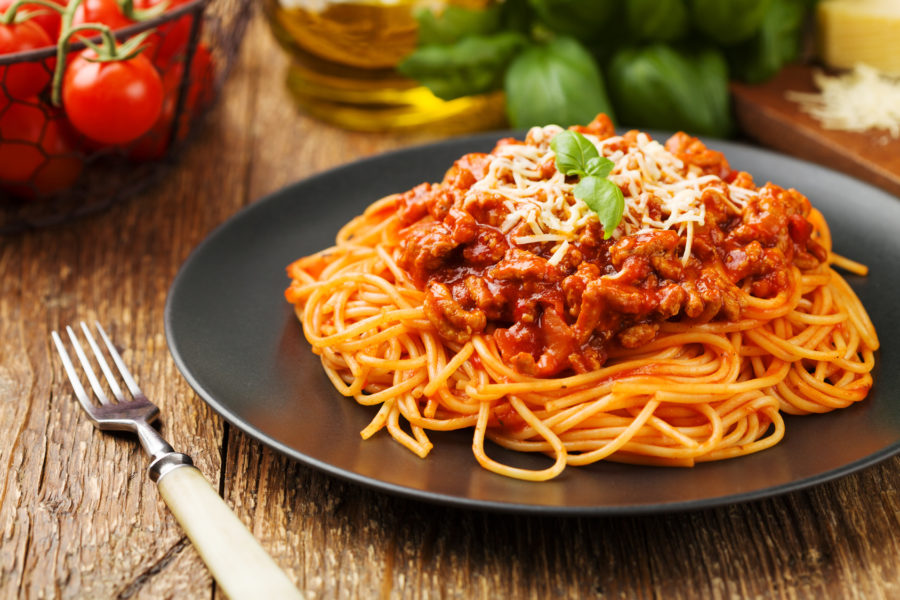PASTA – A HISTORY AS LONG AS SPAGHETTI

Can you imagine food without pasta? Without lasagna with bolognese sauce? Or chicken soup or tomato soup? Would be really hard. Everyone loves pasta in different forms, with or without sauces, and has it on their table few times a week. How did it get there? Who was the first to invent pasta?
CHINA – THE BIRTHPLACE OF PASTA
The history of pasta is four thousand years long, but it’s a mistake to assume that we owe pasta to Italy. The first to eat it were …..Chinese! It was China actually, in a neolithic-era village, where archaeologists found the oldest pasta – it was 20 inches long. The Far East pasta was mostly made of rice or soy flour, and less often of wheat or buckwheat flour.
There are two legends on how pasta came to be. One of them has it that it was by a complete accident while on a ship transporting a shipment of flour. During a storm, water got into the cargo hold, got mixed with the flour, crumbled into pieces and that’s how lumps were made that, when cooked, were apparently fed to slaves. According to another, the inventor of pasta was a baker who, after making bread dough, would remove the leftovers from his hands and then use them to make his soup thicker.
FROM CHINA TO EUROPE
How did pasta end up on the European continent? There was a belief back in the day that it was brought by Venetian merchant Marco Polo back from his journey. But that’s just another legend. The explorer lived between the 13th and 14th century, while the facts are that as early as the 2nd century CE, a certain Galen, a Roman researcher, mentioned a dish of this type. How did it end up on Roman tables? Could it possibly be brought by Arabs, who at the time were wandering all over Europe and Asia? This might be a good clue, as the oldest mention of long, dried noodles comes from 9th century Syria, whereas the first pasta manufacturing plant in Europe was founded in the 12th century Sicily, which was controlled by Arabs at the time and populated by them to a large degree.
Although it is not Italians who were the first here, we can be sure it was them who actually made pasta popular all over the world. In the 15th century, Sicilians started making it out of durum wheat, and two centuries later the first mechanical mixers were created for pasta production.
There wouldn’t be pasta without sauces, and it’s Italians that we owe sauces to. The same goes for the invention of countless pasta shapes that were made by Dominican monks. The incredible popularity of pasta can be attributed to the great economic crisis that hit Italy in the 17th century. Popularization of the cheap yet nutritious food that pasta dishes were is what saved people from starving.
Thanks to the invention of the mechanical pasta press, the whole process was improved and by the end of the 18th century there were already 280 specialized stores operating in Naples. The industrial revolution that took over the entire world at the time led to opening the first pasta factory in Genoa in 1824. After liberating Naples in 1860, the unbreakable leader Garibaldi declared: “I swear to you that it is pasta that will unite Italy!”. One has to admit that he was right, as it indeed did come to pass just two years later.
THE MOST POPULAR TYPES OF PASTA
• Fettuccineis ribbons rolled in nests, they go perfectly with main courses and with sauces
• Tagliatelle -ribbons to go with main courses with sauces
• Ravioli or little pockets filled with all different types of stuffings, they go well with main courses, salads or soups
• Penne rigate are grooved cylinders that go well with main courses, salads and casseroles
• Lasagne -– layers of dough with various stuffings and sauces in between, served baked
• Farfalle are bow-ties served with salads, main courses with sauces
• GnocchiGnocchi on the other hand is a type of Italian noodles that, depending on the region, can be made of potatoes, veggie purée, cheese, buckwheat flour. They resemble Polish dumplings in taste. They are served with different kinds of sauces typical of pasta: pesto, tomato and funghi.
PASTA AND WEIGHT LOSS DIETS

As dietitians claim, it is not pasta that is fattening in itself, but sauces, meat and cheeses that go with it. 100 g of dry pasta provides as much as 330 kcal, but when cooked, it absorbs water and triples its own weight. Which means that quite a serving – about 100 g – only has 110 calories!
POn top of that, pasta is a great source of nutritional fiber and complex carbohydrates, which makes it a good food choice when on a weight-loss diet as well. This type of carbohydrates makes one feel full, which also takes care of feeling hungry and minimizes candy cravings, it also allows to maintain a fixed level of sugars in the body. It makes our brain and muscles function at full capacity. Dietitians emphasize that complex carbohydrates should cover 60 percent of daily energy expenditure. It’s all because our body digests starch very slowly, which makes eating pasta good for our figure.
We should follow the example of Italians – the statistical citizen of that country eats about 30 kg of pasta a year, whereas for a Polish person it’s only 3 kg, and most of the time only in a soup, too. That’s way too low! Properly served pasta is one of the tastiest and healthiest dishes – it should be included in everyone’s diet.
At Bubbles Bar, we especially recommend Tagliatelle with octopus and baked potatoes – this dish is a real pasta feast of flavor.

